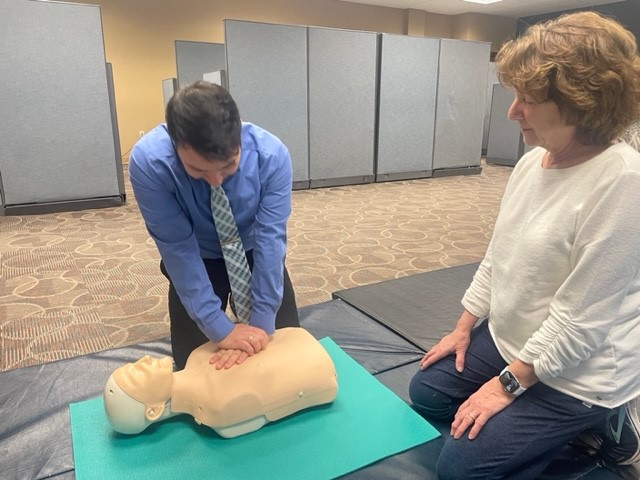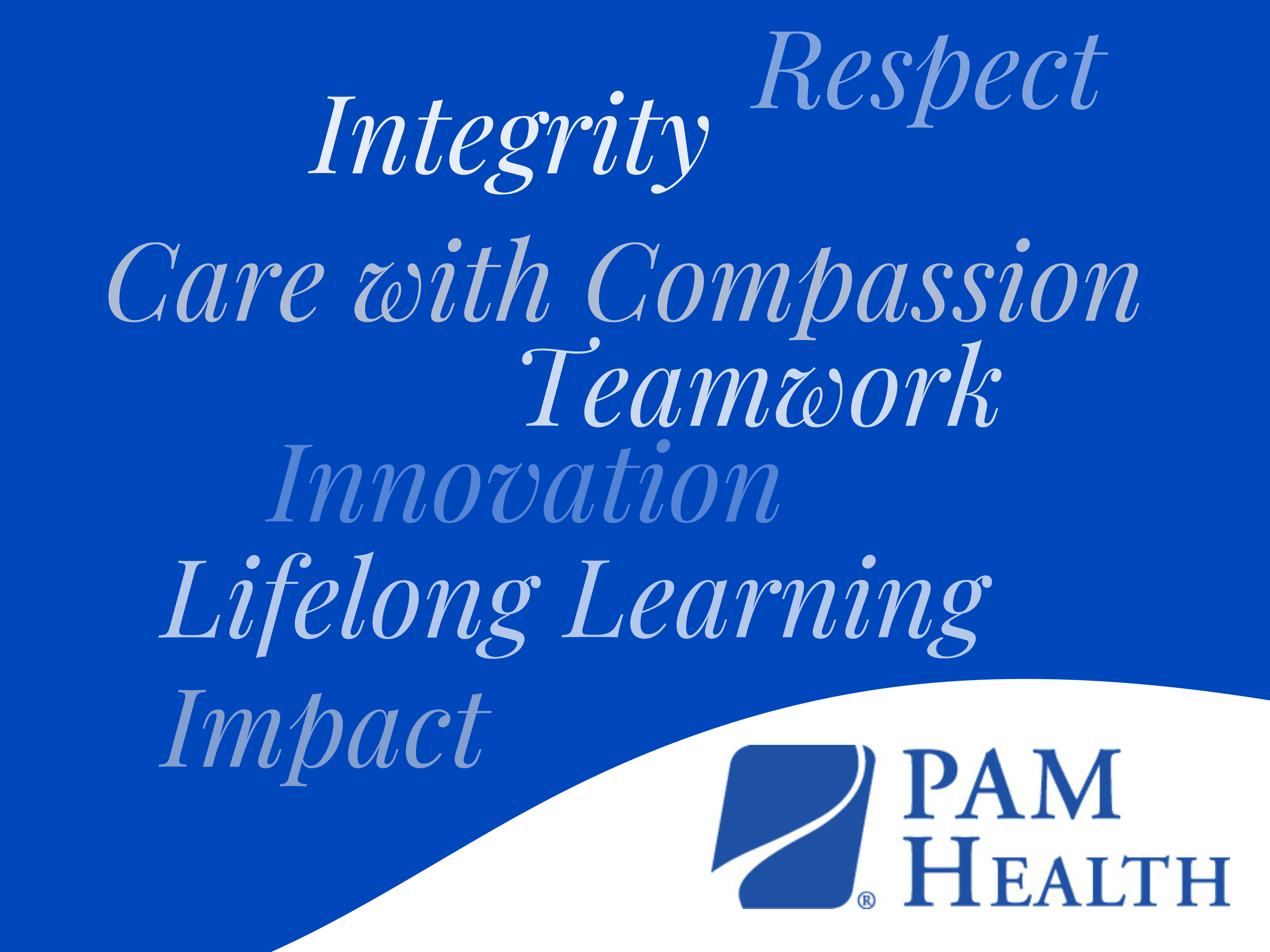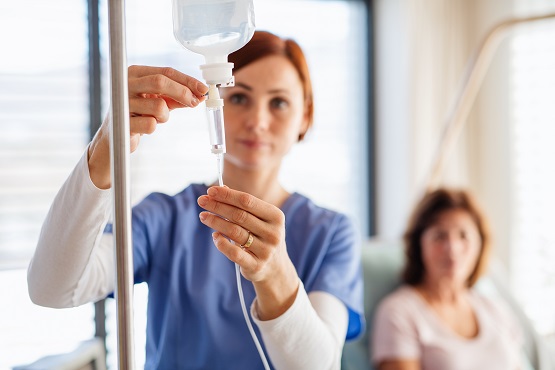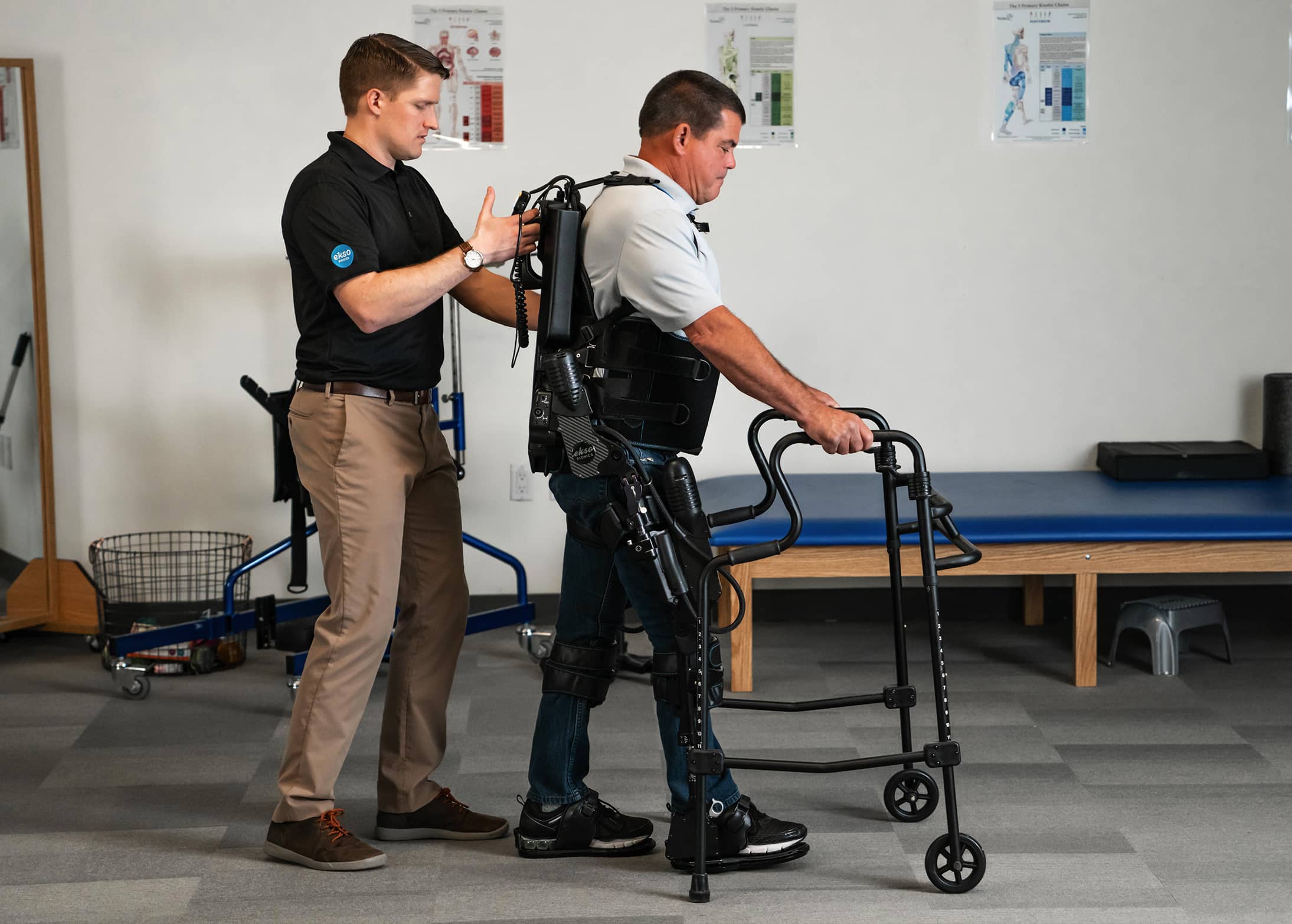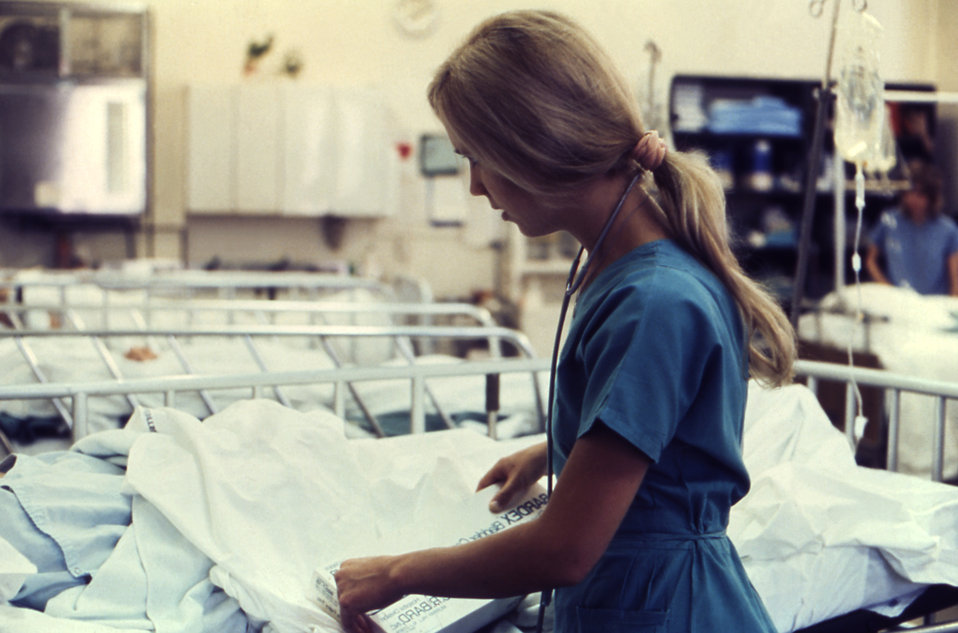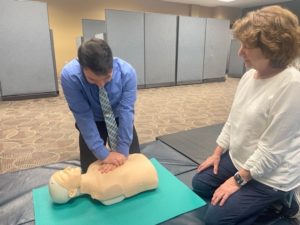
A PAM Health employee learns CPR as a certified instructor provides direction.
In a life or death situation, most people would do whatever they could to save a friend or loved one. However, only 18 percent of Americans say they are up-to-date on CPR (cardiopulmonary resuscitation) training. (Corliss, 2022) Considering that CPR can double or triple a person’s chance of surviving within the first four minutes of a cardiac arrest event, if more people took the training, more lives could be saved.
An additional advantage to learning CPR is knowing that most people who use CPR use it to help save the life of someone they know. According to the American Heart Association, 73.4% of cardiac arrests that occur outside the hospital happen in homes and residences. By comparison, only 16.3% occur in public settings such as restaurants, concerts, and sporting events, and 10.3% happen in nursing homes. (American Heart Association, 2023)
By taking a few hours to learn the basics of hands-only CPR, how to use an AED (automated external defibrillator), and what to do in a medical emergency, an individual may be able to become a real-life superhero to someone in need.
What is a Cardiac Arrest?
To understand the importance of CPR, it helps to understand the basics about sudden cardiac arrest. A cardiac arrest occurs when the heartbeat becomes irregular and causes the heart muscle to stop working. When this happens, oxygen-rich blood is no longer being pumped and circulating throughout the body – including to the brain and lungs. When the brain is without oxygen, brain damage and even death can occur within minutes. In fact, 9 out of 10 people who experience cardiac arrest outside the hospital die. (What is Cardiac Arrest?, 2022)
Although individuals with pre-existing heart conditions are at a higher risk for experiencing cardiac arrest, it can happen to anyone. Regular physical exercise, a healthy diet, and routine health checkups are three simple steps to lower a person’s risk. However, a cardiac arrest can still occur in even the people who appear to be perfectly healthy. Actually, 50 percent of those who experience a cardiac arrest were unaware of serious underlying health conditions.
For example, Ryan Shay was a 28-year-old marathoner in what appeared to be the best of health when he passed away after experiencing sudden cardiac arrest while competing in the Olympic Trials Marathon in New York City in 2007. At mile 5.5 in the 26.2-mile race, Shay suddenly collapsed and was pronounced dead at the hospital a short time later. By all appearances, Shay was the picture of health. Years earlier, doctors had diagnosed him with an enlarged heart. However, they did not feel that was cause for alarm as athletes’ hearts can become enlarged because of the extensive training. An autopsy revealed that the irregular heart rate that had caused his cardiac arrest was likely caused by a combination of his enlarged heart and previously undiagnosed fibrosis of the heart (scarring), which doctors surmised could have been caused years earlier after a bout with pneumonia or the flu. (Berg, 2008)
Shay is but one example of an elite athlete who experienced cardiac arrest. More recently, Buffalo Bills professional football player, Damar Hamlin, was hit in his chest during a Monday Night Football game. Doctors theorized that the sudden impact caused him to experience commotio cordis, which disrupted his heart rhythm and put him into cardiac arrest. (Stahl, 2023) Fortunately, emergency responders were quickly on hand to provide life-saving CPR and transport Hamlin to the hospital for additional care and treatment.
What is CPR?
Although some people may worry that CPR is too complicated or time-consuming to understand, it’s actually a relatively simple technique that takes less than three hours to learn. The American Heart Association offers Heartsaver® CPR AED training in-person or online. (American Heart Association) In the classroom option, students meet with an instructor to learn about the basics of CPR and AEDs. Afterward, the instructor leads students through a practice-while-watching, hands-on training to demonstrate proficiency in the techniques learned in the classroom. Students can also enroll in a virtual training for the classroom portion of the course. Upon completion of the training modules, students must then meet with an instructor for the practice-while-watching, hands-on portion.
Students also learn when to administer CPR. If a person collapses, is non-responsive, and is not breathing, someone should call 911, and CPR should be performed until emergency personnel arrive. Instructors demonstrate how to do chest compressions and mouth-to-mouth resuscitation (using personal protective equipment) and use an AED.
What is an AED (Automated External Defibrillator)?
The Food & Drug Administration, which regulates AEDs, describes the AED as a “computerized defibrillator that automatically analyzes the heart rhythm in people who are experiencing cardiac arrest. When appropriate, it delivers an electrical shock to the heart to restore its normal rhythm. The conversion of a ventricular arrhythmia to its normal rhythm by an electrical shock is called defibrillation.”
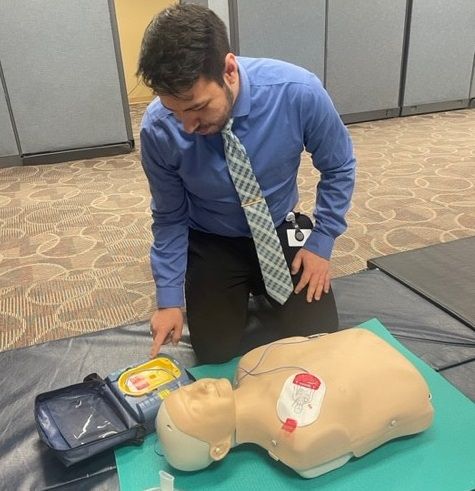
Be a Hero – Learn CPR
A study published in the Journal of American Cardiac Care showed how the use of CPR and CPR with an AED can greatly improve an individual’s chances of surviving cardiac arrest:
- 9% of those in cardiac arrest who were given CPR survived
- 38% of those in cardiac arrest who were given CPR and were shocked survived (Weisfeldt MD, et al., 2010)
The study’s conclusions demonstrated the tremendous impact that CPR and AED usage can have on survival rates. Fortunately, AED placement has increased across the United States. AEDs can commonly be found in grocery stores, shopping centers, retail shops, and other public locations where large amounts of people may gather. Knowing where an AED is located can also help provide timely life-saving intervention.
Although there is no way of knowing when and if someone will ever need to use CPR, knowledge is power when it comes to saving a life. Spending a few hours to learn, understand, and practice CPR and AED usage may come in handy when least expected. By taking action in an emergency, you can save the life of a stranger – or even someone you know.
Bibliography
American Heart Association. (2023). CPR Facts & Stats. Retrieved from American Heart Association CPR & First Aid: https://cpr.heart.org/en/resources/cpr-facts-and-stats
American Heart Association. (n.d.). Heartsaver (R) CPR and AED Course Options. Retrieved from American Heart Association CPR & First Aid: https://cpr.heart.org/en/courses/heartsaver-cpr-aed-course-options
Berg, A. (2008, March 19). Retrieved from New York Times: https://www.nytimes.com/2008/03/19/sports/othersports/19runner.html
Corliss, J. (2022, August 1). Why Don’t More People Know CPR. Retrieved from Harvard Health Publishing: https://www.health.harvard.edu/heart-health/why-dont-more-people-know-cpr#:~:text=Although%2065%25%20of%20people%20in,to%20date%20on%20their%20training.
Stahl, S. (2023, January 3). Doctors Explain What Triggered Damar Hamlin’s Cardiac Arrest. Retrieved from CBS Philadelphia: https://www.cbsnews.com/philadelphia/news/doctors-explain-what-triggered-damar-hamlins-cardiac-arrest/
Weisfeldt MD, M. L., Sitlani MD, C. M., Ornato MD, J. P., Rea MD, T., Auferheide MD, T., Davis MD, D., . . . al, e. (2010). Survival After Application of Automatic External Defibrillators Before Arrival of the Emergency Medical System . Journal of the American College of Cardiology, 1713-1720. Retrieved from https://www.clinicalkey.com/#!/content/playContent/1-s2.0-S0735109710005863?returnurl=https:%2F%2Flinkinghub.elsevier.com%2Fretrieve%2Fpii%2FS0735109710005863%3Fshowall%3Dtrue&referrer=
What is Cardiac Arrest? (2022, May 19). Retrieved from NIH National Heart, Lung,and Blood Institute: https://www.nhlbi.nih.gov/health/cardiac-arrest

